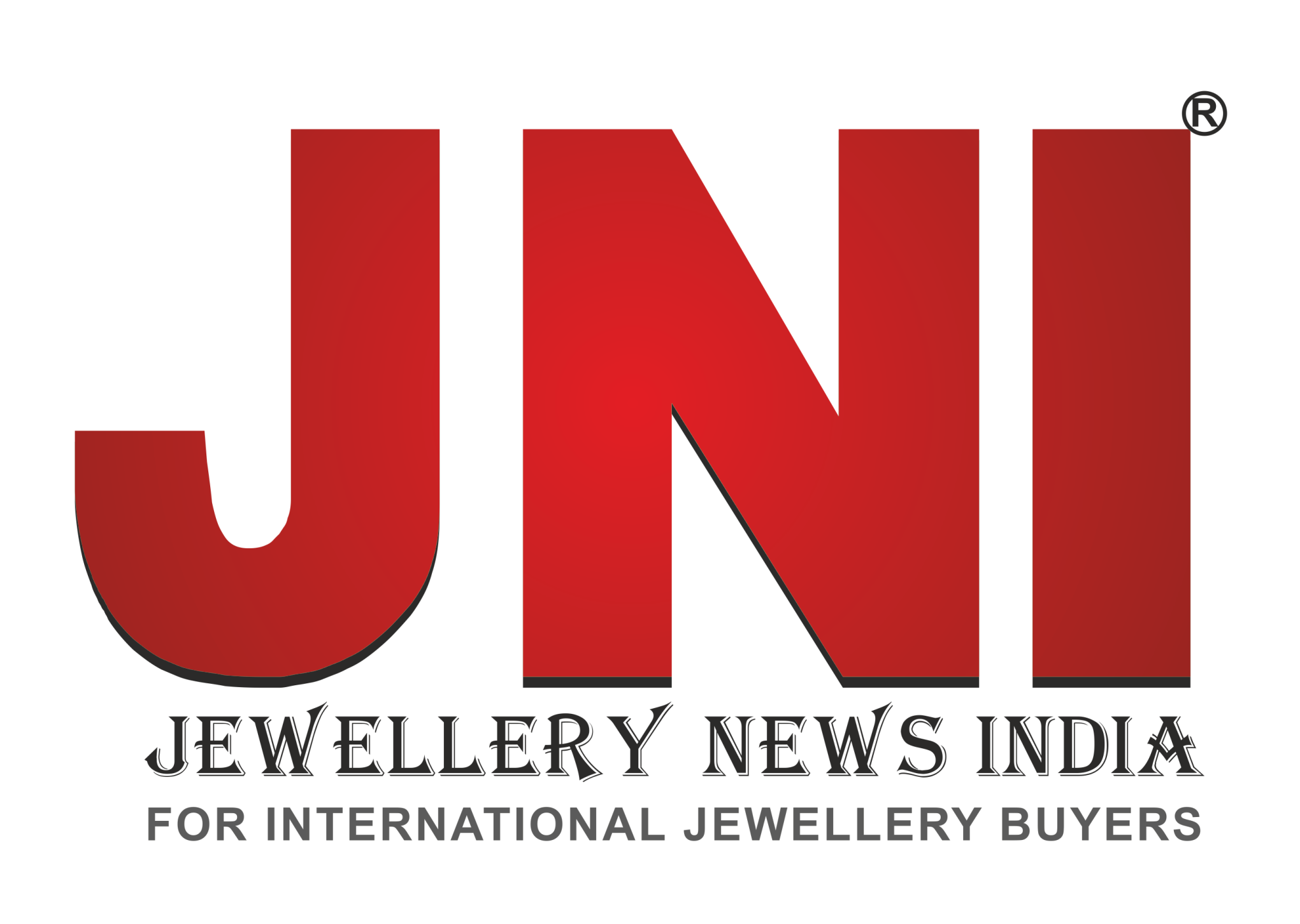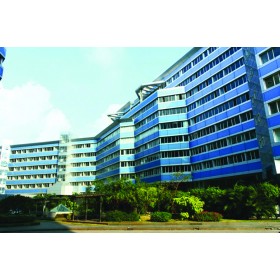Editor's Desk
Diwali to remain glittered & sparkled!
Business
Sentiment just ahead of IIJS 2019 was not a good! Virtually every exhibitors
was fearing that there would be a great short in visitors footfalls, even if
fewer is visiting IIJS, there would not be any healthy inquiries & buying
in the B2B dome! And the 36th
edition of the IIJS would not be able to recover their expenses which being
incurred as an exhibitors!
I
had inked this fear in the last IIJS Exclusive issue & about the show
further that the business sentiment for the festive season up to Diwali was poor,
very negative! Yet, this edit is of courageous & cheerful business
sentiment! Yes, the show remained fantastic! Changed the dull-n-gloomy business
sentiment to a good festive season ahead! Yes, Festive season ahead & up to
Diwali is most likely to remain glittered -n-sparkled!
Additionally
two points are being added over post IIJS positive sentiment, 1: estimate of
Kharif Crop & 2: India Reform Spree.
Ahead
of IIJS this Kharif Crop estimate was not available and about half of the India
was flooded! Divested people & flooded crop could not bring any light in
Diwali was a worry & one of the adverse reason; but now cool, despite flood
& natural adverse, the government has issued estimated crop production
figures and this is good-n-satisfactory.
The
Advance Estimates of production of major crops for 2018-19 says, Total Food
grain production in the country is estimated at 284.95 million tonnes which is
higher by 19.20 million tonnes than the previous five years’ (2013-14 to
2017-18) average production of food grain.
On
the other hand we have seen two major reform announcements by FM India, Nirmala
Sitharaman so far from post IIJS and she has announced to carry all together
three announcements. From business point of view she has announced, ease of tax
paying system be that Income tax, GST, Customs or a Prefilling of IT returns!
Modi
2.0 has been introducing a faceless scrutiny from Vijaya Dashmi 2019, Reduction
in GST returns and simplification of forms, Refund process of GST simplified. Contribution
of ESIC reduced from 6.5% to 4%, also introduced Web-based and
jurisdiction-free Inspections, Inspection report to be uploaded within 48 hours!
Self-certification for start-ups announced!
With the new announcements, CSR violation would not be treated as criminal
offence and would instead be civil liability. Government introduced Centralized
Computer System. Accordingly, on or after 1st October, 2019 all notices,
summons, orders et al from I-T authorities shall be issued through a Centralized
Computer System and will contain a computer generated unique Document
Identification Number. Any communication issued without computer-generated
unique document identification number shall be non-established in law.
According
to reform pronouncement, all old notices to be decided by 1st October 2019 or
uploaded again through the system. From 1st October, 2019 all notices to be
disposed-off within the three months from the date of reply. De facto the
concluded IIJS 2019 enhanced business sentiment and additionally positive crop
estimate & reform announcements have also boosted the sentiment to stay
ready to cater festive season in a better way untill Diwali.
On export
front, it is likely to a see vibrant season! Footfalls at Bharat Diamond Week
may hike up by about 30% as HK September Show is looking in limbo, additionally
BDB has inked several MoUs with overseas trade associations is a positive step
to catch a trade of the season-n-festive!
Now,
another additional favourable point is global trade war especially between US
& China. I think a blaze of trade war is not going to attain a normal
position at least by the year end! And US is our top destination for merchandise
exports. India has jump up in the list of US Import. As of today India is the
top 9th nation in the US import list. At this season there is a positive
sign to jump up further from the 9th!
Nayan Jani,
Editor JNI
Stay Connected: editor@jni.co.in,
Cell: +91 9820166023
Challenges, DDES & buyer confidence!
Dear Readers, till you would read the edit, 1st
ever Bharat Diamond Week & the 3rd Diamond Detection Expo & Symposium (DDES
2018) would have been concluded through 23rd to 25th April 2018 at
BDB, Mumbai. Yet I know there are growing challenges for a manufacturer &
traders of natural diamonds! Equally there are challenges with detection
technologies to stay edge-up to identify laboratory made stones!
Just ahead of the curtain raising of WDC
& DDES, the Diamond Services research claimed: “synthetic diamonds, which
have created under conditions of High Pressure-High Temperature (HPHT) and then
subject to irradiation treatment, may be escaping detection by many of the screening
devices available in the market that are testing diamonds at room temperature.”
Means, all those available technologies to detect such stones are just an
outdated! Is it so?
No.
Because, swiftly, the International Institute of Diamond Grading & Research
(IIDGR) reacted, rest players may clarify or announce about their instruments
yet, IIDGR said that, confirms that its instruments AMS2, SYNTHdetect,
DiamondView and DiamondSure are all effective at screening HPHT synthetic
material which has been irradiated and is tested at room temperature. Any
business using these devices can have full confidence that any such material
will be detected without the need to undertake tests at different temperatures.
IIDGR has been established by De Beers Group
to provide a premium service and proprietary equipment to the diamond industry.
Based in the UK, Belgium and India, and run by the world’s top diamond experts,
the International Institute of Diamond Grading & Research offers a range of
expert services.
It is true that Phosphorescence is typical in HPHT-grown synthetic
diamonds which is ‘almost non-existent in naturally formed diamonds, being
limited almost exclusively to Type IIb natural stones, which make up not more
than 0.1 percent of the total number of available diamonds.’
By considering challenges, The DDES is
providing a dome in India to interact diamond players with tech savvies! To
create an effective approach for a scientific & technology within the
players! DDES believe that is the boulevard to attain buyer confidence!
Being a global leader in diamond
manufacturing India thinks it is a duty to protect leadership India &
reputation India built over years! And therefore India has ‘Zero Tolerance’ for
any undisclosed mixing with mined diamonds!
And therefore since 2013, GJEPC is endeavours
& engaging all those key stakeholders to focus four areas, 1: Detection, 2: Differentiation, 3: Disclosures & 4:
Documentation. In the row of Zero tolerance GJEPC & BDB together says, “The
Indian diamond industry stood firmly committed to taking all steps necessary to
prevent undisclosed mixing and establish separate footprints for natural and
synthetic diamonds as this would help maintain consumer confidence in natural
diamonds.”
The Natural Diamond Monitoring Committee
(NDMC) was formed in the year 2015 at GJEPC. NDMC consists of representatives
from the GJEPC, BDB, GJF, GIA and other Trade Bodies in the Gems &
Jewellery sector.
GJEPC is developing a network of detection
centers with tech-n-instruments at all those key manufacturing centers in
Gujarat with NDMC since 2015.
Right with targeting 21 key diamond
manufacturing centers across India, GJEPC offered synthetic diamond detection
machines-n-tech at 50% of discount in 2017. At the largest global diamond trading
boundaries of BDB have announced banned on any trading of synthetic diamonds.
Through Diamond Detection and Resource Centre (DDRC) DBD has made detection technology accessible to its members within
its’ boundaries!
Bottom Line:
For any detection technology & instruments, machineries, the doors of DBD, GJEPC & of diamond industry India is always opened despite of DDES! They are being invited to display such tech at BDB.
It has been a couple of years now since the
Indian Government is trying to formulate a comprehensive gold policy for the
country. Recently, former Governor of the Reserve Bank of India (RBI) Mr.
Venugopal Reddy has said that there is need for a comprehensive policy on gold,
owing to its role in the economy and in order to handle the precious metal in a
better way.
In fact, many industry leaders and trade
bodies like World Gold Council (WGC), Federation of Indian Chambers of Commerce
and Industries (FICCI) and Associated Chambers of Commerce (ASSOCHAM) have time
and again recommended the government to frame a national gold policy.
It seems now that the government has taken
into consideration the recommendations of the industry and as a result the
government may frame a National Gold Policy soon. Besides, it may also
establish a Gold Board for managing import-export, develop accredited
refineries, drive gold monetization actively and introduce compulsory quality
certification of gold.
The WGC had initially suggested framing a
gold policy in 2014 to help mobilize and monetize an estimated 22,000 tons of
gold lying idle with households and temple vaults into productive use of
economic development. “I feel that discussions on gold in India must move
beyond gold import curbs and must focus on how this industry can fulfil its
vision to make a major contribution to the country’s prosperity in the next
five years. We (India) should support this vision by creating a favorable eco
system which deals with gold as a fungible asset category, reflecting our
cultural and economic significance. We must find ways of mobilizing and
monetizing the household savings now imbedded in gold stocks through the formal
financial sector for the benefit of the economy as a whole. It’s now hi-time to
re-engage all stakeholders to develop a comprehensive long term gold policy
which is affiliated to India’s growth objectives,” Mr. Somasundaram PR, MD of
the WGC (India) had commented two years back.
Accordingly, the government is expected to
set up the Gold Board under the National Gold Policy, and alongside work on
development of Gold Exchanges. India’s Finance Ministry held discussions late
last year with stakeholders of the industry and sought their views on a
National Gold Board, a body on the lines of the Financial Stability and
Development Council.
At the same time, India Gold Policy Centre
(IGPC) at Indian Institute of Management, Ahmedabad (IIMA) recently boosted the
government’s initiatives to introduce a gold policy by releasing a study on the
viability of a Gold Spot Exchange in India by Prof. Joshy Jacob and Prof.
Jayanth R. Varma of IIMA. One of the key findings of the study is that a Gold
Spot Exchange is exceedingly viable and would lead to efficient price
discovery, assurance in the quality of gold, active retail participation,
greater integration with financial markets and greater gold recycling. The
study involves a survey of all important stakeholders of the industry including
jewellers, refiners, bankers, commodity exchanges and other participants in the
value chain. It also examined the Gold Spot Exchanges in Turkey, China,
Singapore and Dubai.
The study also suggests that the Gold Spot
Exchange should offer a wide range of contracts to meet the needs of the gold
industry like a) Domestic spot gold contract, b) Global spot gold contract
denominated in USD based on delivery outside the domestic tariff area (DTA), c)
Dore swap contract and d) gold lending and borrowing mechanism (GLBM). Within
the limits of capital control regulations, both the domestic and international
contracts on the Gold Exchange must be open to the broadest range of
participants.
Gold-related policies are also expected to
help the Gold Monetization Scheme (GMS) launched by the government.





